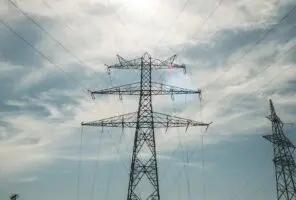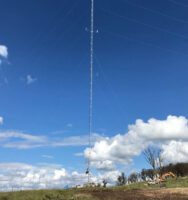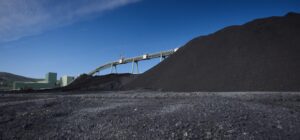Green industrial growth, the shift to electric vehicles and soaring demand for new connections to South Australia’s clean, green grid could lead to a doubling of the state’s electricity usage by the end of the decade, a new report has found.
In its latest annual planning update, South Australia transmission company ElectraNet says it has been swamped with applications to connect to the state’s “low-cost, low emissions” network from the mining sector, hydrogen industry, data centres and processing facilities.
“This could, in total, potentially equate to an additional 2,000MW of demand and a doubling of South Australia’s electrical energy usage by 2030,” the report says.

South Australia already generates around 70% of its electricity from renewable sources, averaged over the last 12 months and ElectraNet says it is on track to reach 100 per cent renewables well before the informal target of 2030.
The state also boasts the world’s first power system where rooftop solar can, and does, exceed the entire state’s electricity demand – during the day, of course.
(This also means South Australia’s peak in electricity demand has shifted to the evening at around 8pm. According to AEMO a record peak in SA demand of 2,583MW was recorded last winter.)
All this clean, green – and cheap – electricity is a major selling point for new industry seeking to clean up its act while also keeping costs down. (South Australia’s wholesale electricity prices are low, even if its retail prices are not).
Throw a few more “key developments” in the mix – the production of “green steel,” the development of multiple renewable hydrogen hydrogen hubs, the widespread adoption of electric vehicles – and ElectraNet says there could be significant increases in the state’s maximum electricity demand.
“South Australia remains at the forefront of gigawatt scale zero emission electrical systems globally,” the report says.
“Discussions with customers are highlighting growing interest in developing new projects in South Australia and the importance of a renewable electrical grid in de-risking long-term investments and meeting their ESG objectives.
“This trend can be expected to continue to drive demand growth in the years to come.”
So, how to deal with it? ElectraNet says new inter-state interconnector capacity being delivered through Project EnergyConnect will help somewhat, but a number of large-scale transmission developments may be needed to support the connection of large new loads and generators.
“As an outcome of our REZ prioritisation work, we are considering … options for development that would unlock capacity for new generation in Mid North SA, Riverland, Northern SA, Eastern Eyre Peninsula and South East SA REZs,” ElectraNet says.
And it adds that, based on the potentially higher demand forecasts and customer interest described in this latest report, it has identified four priority project options that “could deliver benefits if development occurs within approximately 5 years.”
These include, in the state’s mid-north, the construction of new high capacity double-circuit twin conductor
lines from Bundey to Para or to a new site between Parafield Gardens West and Torrens Island, and another between Bundey and Cultana.
ElctraNet says that the first option would enable higher transfers of low-cost renewable energy from the Mid North to Adelaide, which will become increasingly important as Adelaide’s dispatchable gas generation retires and as climate change increases bushfire risks to the transmission corridors in the Eastern Hills.
In the longer term, ElectraNet says it is also considering a range of potential options to meet supply requirements that would build on the immediate priorities by providing increased capacity for future large load and generation connections as they occur.











